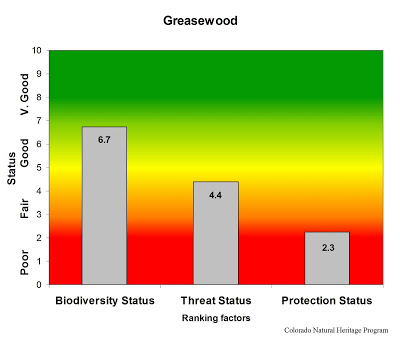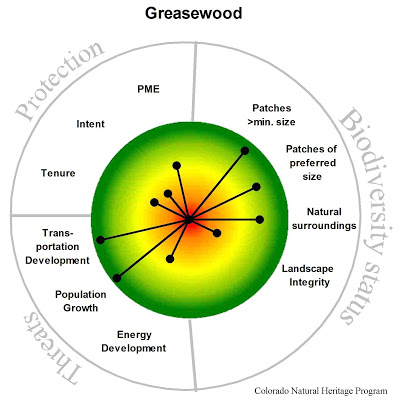
The Greasewood ecological system accounts for less than 450,000 acres in Colorado, where it is typically found near drainages on stream terraces and flats, on alluvial fans along streams or arroyos, or as rings around playas. In eastern Colorado, occurrences are primarily in the southwestern portion of the plains. Large occurrences are also found in the lower elevations of Colorado’s western valleys and throughout much of the San Luis Valley. Elevations range from about 4,000 to 7,700 feet. Greasewood flats usually have saline soils, a shallow water table and flood intermittently, but remain dry for most of the growing season. These open to moderately dense shrublands are dominated by black greasewood, often with additional shrubs and graminoids that tolerate saline soils.
Greasewood stands are used by some shrubland birds, such as the sage thrasher, and small mammals including the white-tailed antelope squirrel. In the San Luis Valley, these shrublands are home to rare local subspecies of the silky pocket mouse and thirteen lined ground squirrel. Here also the rare slender spiderflower occurs in alkaline playa wetlands that are imbedded in greasewood flats. Some large tracts of greasewood shrubland are included within federally owned lands managed by the National Park Service, the U.S. Fish and Wildlife Service, or the Bureau of Land Management, but are generally not part of protected areas. Occurrences of this system are threatened primarily by agricultural and energy development.






